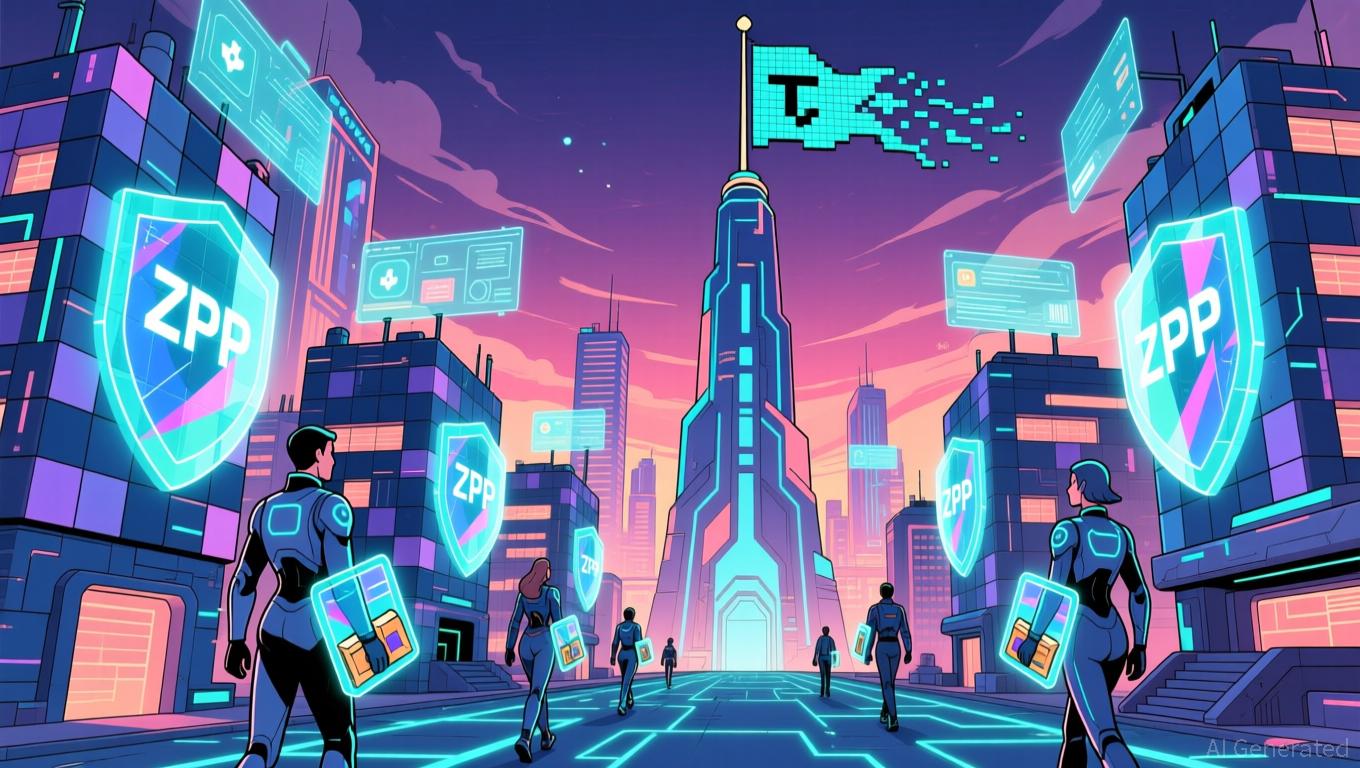TWT's Updated Tokenomics: Genuine Sustainability or Just Postponing Devaluation?
- Trust Wallet Token (TWT) rebranded as Toncoin in 2025, shifting from governance to gamified utility via the Trust Premium loyalty program. - A 2020 token burn eliminated 88.9B TWT (40% of supply), creating scarcity but raising liquidity concerns amid limited adoption incentives. - TNSR's market resilience contrasts with TWT's risks, as centralized utilities and opaque supply management threaten liquidity and institutional trust. - TWT's success depends on balancing gamified engagement with decentralized
Structural Changes: From Governance to Gamified Utility
In 2025, TWT’s tokenomics will shift focus from governance to gamified utility, launching the Trust Premium loyalty scheme. This program incentivizes users for activities such as swapping, staking, and holding
A pivotal part of this overhaul was the 2020 token burn, which removed 88.9 billion TWT from circulation—creating scarcity but also sparking liquidity concerns. By that year, more than 40% of TWT tokens were already available on the market, so the burn’s scarcity effect could be weakened if liquidity remains low. Some observers
Utility and Adoption: A Double-Edged Sword
The effectiveness of the Trust Premium model depends on attracting a large user base. If the program fails to reach enough participants, the token’s practical use—and its price—could remain limited. For comparison, staking rewards in 2024 averaged 18.5% for
TNSR’s recent performance during a market downturn provides a contrasting case. Its strong position in the
Liquidity and Transparency: Critical Gaps
Issues of transparency and liquidity remain unresolved. TWT’s tokenomics do not offer the same clarity as projects like Monad, which locks over half its supply at launch to support long-term objectives. In contrast, TWT’s less transparent approach to supply could discourage institutional investors, who value predictability
Liquidity challenges are further highlighted by TNSR’s recent situation. Following Coinbase’s purchase of Vector.fun, TNSR holders lost access to a key utility (Vector’s consumer app), turning the governance token into one with fewer practical uses. This led to increased selling and price swings, highlighting the vulnerability of tokens that rely on centralized platforms
TNSR Analogy: Lessons for TWT
TNSR’s adoption of open-source protocols and grant initiatives has broadened its revenue streams but also brought the risk of increased selling from large token distributions. TWT’s 2025 update must similarly find a balance between expanding utility and managing supply. For example, TNSR’s emphasis on real-world assets and AI-powered tools has added both complexity and execution risk
Conclusion: A Delicate Balance
TWT’s tokenomics redesign marks a strategic move toward value based on real utility, but its future depends on overcoming challenges in liquidity, transparency, and adoption. The gamification and scarcity elements are encouraging, yet they echo the vulnerabilities seen in TNSR’s post-acquisition decline. If Trust Wallet can maintain user momentum and align incentives with ecosystem development, TWT could sidestep the fate of purely speculative governance tokens. Still, without strong liquidity solutions and transparent practices suitable for institutions, these changes may only postpone a potential downturn.
Investors should keep an eye on critical indicators: Trust Premium’s user growth, staking involvement, and how TWT compares to TNSR’s track record. At present, TWT’s tokenomics walk a fine line between breakthrough and instability—a risk that could either yield rewards or falter under market stress.
Disclaimer: The content of this article solely reflects the author's opinion and does not represent the platform in any capacity. This article is not intended to serve as a reference for making investment decisions.
You may also like
Crypto ATM Operator Eyes $100M Sale Amid Founder’s Money Laundering Case
Why is Crypto Up Today? Here's What you didn't Notice...
Ethereum News Today: Ethereum's Recent Overselling: Is a Recovery Imminent or Will the Decline Continue?
- Ethereum faces mounting bearish pressure amid crypto market selloff, with technical indicators and extreme fear metrics signaling a stretched downtrend. - Market capitalization dropped 8% in 24 hours, Bitcoin dominance rose to 56%, while ETH trades below key EMAs with an oversold RSI of 27. - Binance confirms "Strong Sell" signals for ETH/USD, with 12 bearish moving averages and a 14-day RSI of 30.48 reinforcing the negative bias. - DeFi liquidity crisis ($12B idle assets) and a Fear & Greed Index at 14

Blockchain’s Evolving Foundations: Institutional Embrace Fueled by Governance and Privacy
- Tezos (XTZ) shows steady recovery via governance-driven upgrades, regaining $0.60 support amid growing institutional altcoin interest. - Zero Knowledge Proof (ZKP) gains traction with privacy-focused tech, $100M engineering investment, and transparent ICA token distribution. - Both projects highlight blockchain 3.0 priorities: Tezos emphasizes forkless governance adaptability, ZKP advances verifiable privacy infrastructure. - Analysts project XTZ reaching $1.20 by 2026 through RWA partnerships, while ZKP
